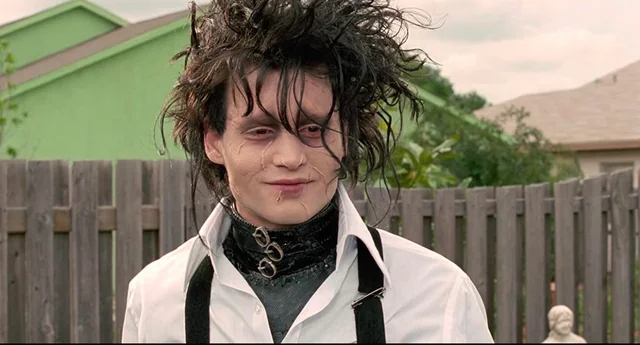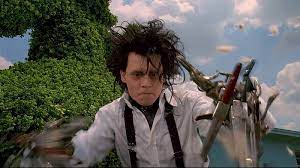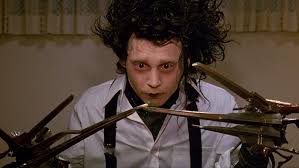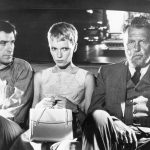Edward Scissorhands (1990)

Edward Scissorhands (1990) Review: A Tim Burton Classic That Blends Fantasy and Emotion
Introduction
Released in 1990, Edward Scissorhands remains one of Tim Burton’s most beloved and iconic films. With its unique blend of gothic fantasy, romance, and social satire, the film tells the poignant story of Edward, an artificial man with scissors for hands, played by Johnny Depp. The movie not only showcases Burton’s signature visual style but also delivers a heartfelt tale of love, acceptance, and the pain of being different. This review will explore the film’s themes, performances, cinematography, and lasting impact on both cinema and popular culture.
Plot Summary
The film begins with an elderly woman telling her granddaughter a bedtime story about a mysterious man named Edward who lived in a castle on a hill. Edward was created by an inventor (Vincent Price), who died before he could give Edward human hands, leaving him with scissors instead.
One day, Peg Boggs (Dianne Wiest), an Avon saleswoman, stumbles upon Edward’s gothic mansion and invites him to live with her family in a pastel-colored suburban neighborhood. At first, Edward is met with curiosity and intrigue by the residents, who are fascinated by his scissor hands and his extraordinary ability to sculpt hedges, hair, and even dog fur. However, as Edward becomes closer to Peg’s daughter, Kim (Winona Ryder), and falls in love with her, he also faces increasing hostility and fear from the townspeople, led by Kim’s jealous boyfriend, Jim (Anthony Michael Hall).
As tensions rise, Edward is eventually scapegoated for various misfortunes in the neighborhood, leading to a dramatic and heartbreaking conclusion that cements his status as an outsider forever.
Themes and Symbolism
The Tragic Beauty of Being Different
At its core, Edward Scissorhands is a modern-day fairy tale that explores the pain of being different. Edward, with his mechanical hands, is both a wonder and a misfit, representing anyone who has ever felt out of place in society. His struggles to integrate into suburban life reflect the challenges faced by those who are considered ‘other.’
Suburbia and Social Critique
Burton’s depiction of the suburban neighborhood is deliberately exaggerated, with its brightly colored houses, nosy neighbors, and artificial perfection. It serves as a stark contrast to Edward’s dark and gothic origins, highlighting the superficial nature of societal norms and the dangers of conformity.
Love and Acceptance
The relationship between Edward and Kim is the emotional heart of the film. Edward’s love for Kim is pure and unconditional, yet he realizes that they can never truly be together due to his physical and societal limitations. This tragic romance adds depth to the narrative and solidifies the film’s emotional impact.
Performances
Johnny Depp as Edward
Johnny Depp delivers one of his most iconic performances as Edward. With minimal dialogue, he conveys a wide range of emotions through his facial expressions and body language, portraying Edward’s innocence, curiosity, and sorrow with remarkable depth. Depp’s portrayal established him as a leading Hollywood actor and marked the beginning of his long collaboration with Tim Burton.
Winona Ryder as Kim
Winona Ryder brings warmth and authenticity to Kim, making her more than just the typical ‘love interest.’ Her transformation from an initially skeptical teenager to someone who deeply cares for Edward is beautifully portrayed, adding emotional weight to the film.
Dianne Wiest as Peg Boggs
Dianne Wiest provides a heartfelt performance as Peg, the kind-hearted saleswoman who takes Edward in. Her character represents kindness and acceptance in a world quick to judge.
Anthony Michael Hall as Jim
Anthony Michael Hall’s portrayal of the antagonist, Jim, is effectively menacing. He embodies the cruelty of those who fear and reject what they do not understand, making him a fitting antagonist for Edward’s journey.
Cinematography and Visual Aesthetics
Tim Burton’s signature gothic aesthetic is on full display in Edward Scissorhands. The contrast between the eerie, castle-like mansion and the hyper-stylized suburban neighborhood visually reinforces the film’s themes of isolation and societal expectations.
Cinematographer Stefan Czapsky uses a mix of muted and vibrant colors to enhance the fairy-tale quality of the film. Edward’s black-and-white attire sharply contrasts with the colorful neighborhood, emphasizing his outsider status.
Danny Elfman’s Score
Danny Elfman’s hauntingly beautiful score plays a crucial role in setting the tone of the film. The orchestral arrangements, particularly the melancholic main theme, add an ethereal and emotional layer to Edward’s journey. The music is so integral to the film that it has since become one of Elfman’s most recognized compositions.
Cultural Impact and Legacy
Over three decades since its release, Edward Scissorhands remains a cultural phenomenon. It has inspired various adaptations, including ballet performances and theatrical productions. The character of Edward has become an enduring symbol of misunderstood individuals, resonating with audiences who relate to his struggles.
The film also cemented Tim Burton’s reputation as a visionary filmmaker and strengthened his collaboration with Johnny Depp and Danny Elfman. It continues to be referenced in pop culture, from TV shows to Halloween costumes, proving its lasting influence.
Final Verdict
Edward Scissorhands is a masterpiece of storytelling and visual artistry. With its compelling themes, stunning cinematography, and unforgettable performances, the film continues to captivate audiences decades after its release. Whether viewed as a gothic fairy tale, a love story, or a critique of societal norms, Edward Scissorhands remains one of Tim Burton’s finest works.











